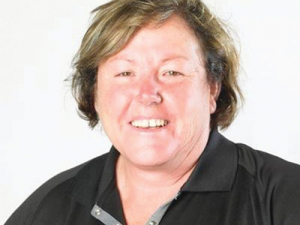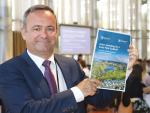Dairy farmers living in the shadow of Mt Taranaki are doing it tough as the rain keeps on falling.
The net effect is poor grass growth and other problems, says DairyNZ’s head consulting officer in the region, Katrina Knowles.
She told Dairy News that the regional council said that in a period of 76 days there were only nine when it didn’t rain or cloud over.
The rain is falling at a time when farmers in the high altitude areas of Taranaki normally experience good pasture growing conditions.
“This is the time of year when these farmers would normally be making the most of the season. Instead grass growth is slow and we are even seeing turnip crops rotting in the ground,” she says.
Some of the high altitude farmers are milking every 16 hours, but it’s hard to say whether this is because of the wet or for lifestyle reasons, so they can have more time with their families.
The lack of sunshine has also affected maize crops in the region.
“The amount of maize harvested will be down this year. We just haven’t had the hot days to get maize growing.
“In some areas like North Taranaki and the coastal strips, the crops are looking reasonably good but I don’t think they will be as good as last year.
“Interestingly, it is quite a mix. For example some crops up Waitara way went in later but they have done better because they have had more sunshine than others. Maize is a crop that needs heat once it is established and it needs heat to grow,” she says.
South Taranaki is now seeing production gains much bigger than during the same time last year, Knowles says.
This is because it is wetter there than it was 12 months ago.
But empty rates for cows are up on last year.
“South Taranaki vets have pregnancy tested 15,000 animals and empty rates are up 2-3% on last year. Perhaps this is because people have had shorter mating periods, they didn’t use intervention like they normally would have and they didn’t have the money to do that.
“A lot depends on what people were trying to achieve – in some cases a reduction in staff.
“Heat detection wasn’t as good as it normally would be and there was a lot of pressure through that spring period. Pasture utilisation wasn’t good either because of the rain, and the heat would have been suppressed by the weather.”
As if that wasn’t enough, Knowles says the warm wet weather as seen spore counts for facial eczema rise. She says farmers need to play close attention to this now.


















